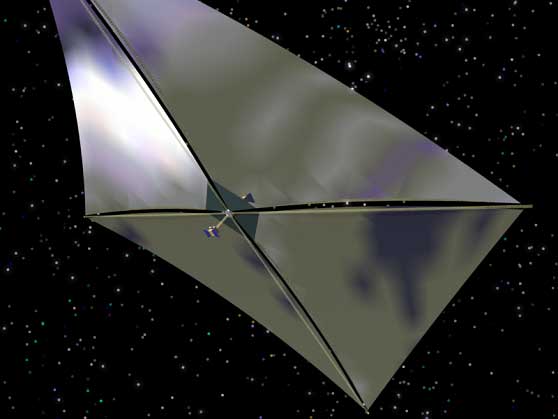Space Travel By Sailing? Ahoy!
Gareth Andrews / 10 years ago

Space travel has long since been a thing of dreams, science fiction fans have long enjoyed the notion that one day our race would spread out into the stars and claim other planets as homes. First though we will need to reach the planets in question, but that may be one step closer today.
In recent weeks, NASA has been posting their findings on an EM drive, a concept that has long been considered impossible. By bouncing microwaves around a chamber, an EM drive would be able to create thrust from just electrical energy, removing the need for any fuel. This, however, is considered impossible by many because it violates the conservation of momentum, what is considered a fundamental law of the universe. With positive results seen so far we could be one step closer to a future among the stars.
Bill Nye is known for his famous insight into the world of physics, today he is taking a step towards another form of interstellar travel. Almost 40 years ago Carl sagan began to explain a new form of space travel, the concept using radiation from a star to help propel a vessel in a fashion comparable to using a sailboat on the sea.
The Solar sail project, founded by Carl Sagan, is currently headed by Bill Nye, and aims to explore the potential of using this method of transport instead of modern day rockets with fuel and chemicals powering their engines. The result of this is two small craft, built by Stellar Exploration Inc, the first of which is set to launch on the 20th of May. A full timeline of which can be seen here, on the planetary.org website. The first test flight aims to test the craft’s ability to deploy the four sails from a central cube, that will hold the arms and initially contain the sheets used for the sails. With the craft only capable of space travel, it requires an initial boost to leave the atmosphere, traditionally attached to a rocket before being detached and released into space when it has left Earth’s gravitational pull.
With space flight becoming a larger part of research and development, and with more of these showing promise such as the EM drive, only time is what separates us from space travel and the stars.
Thank you to CNet, Planetary.org and The Verge for providing us with this information.
Image courtesy of ISSS.



















